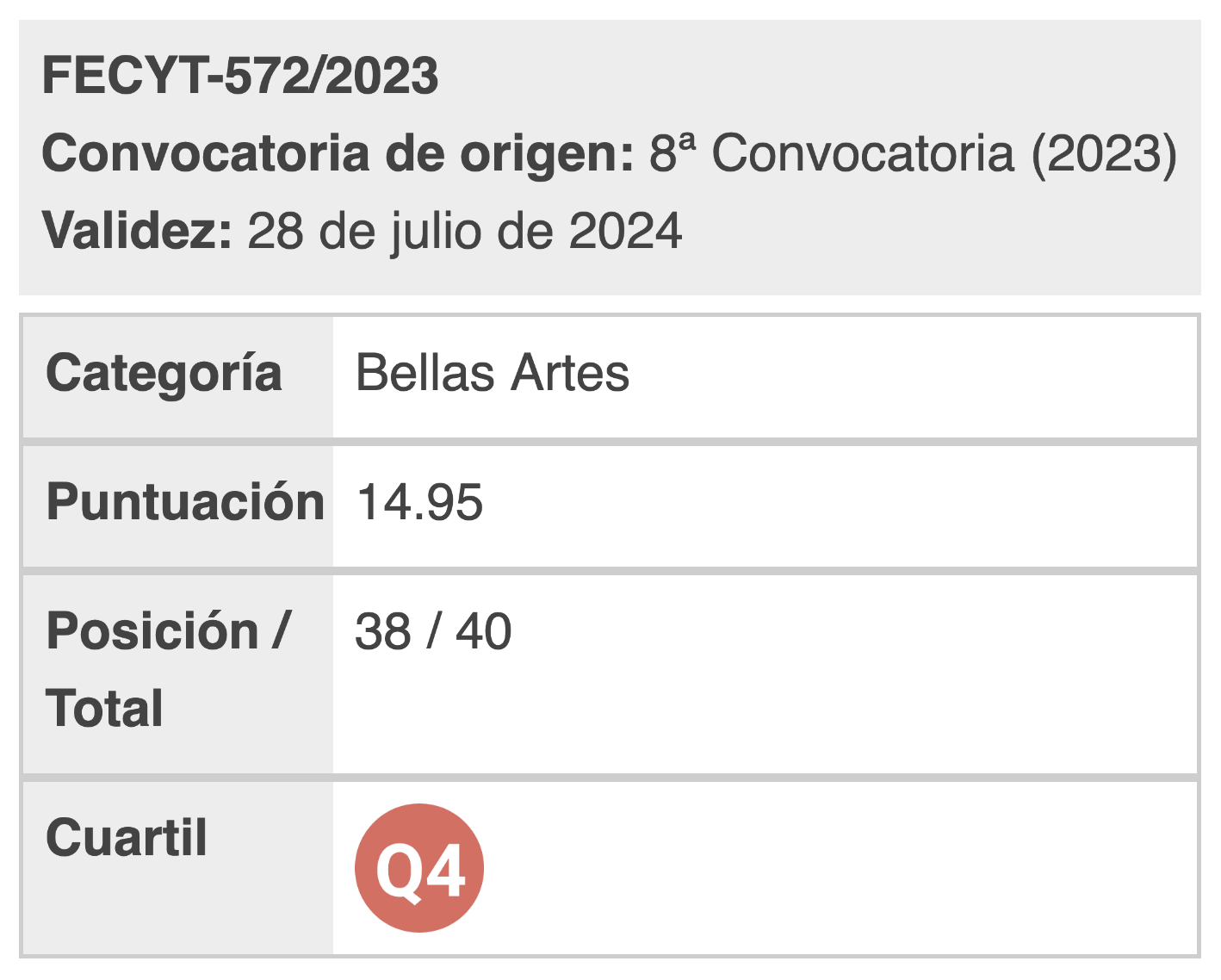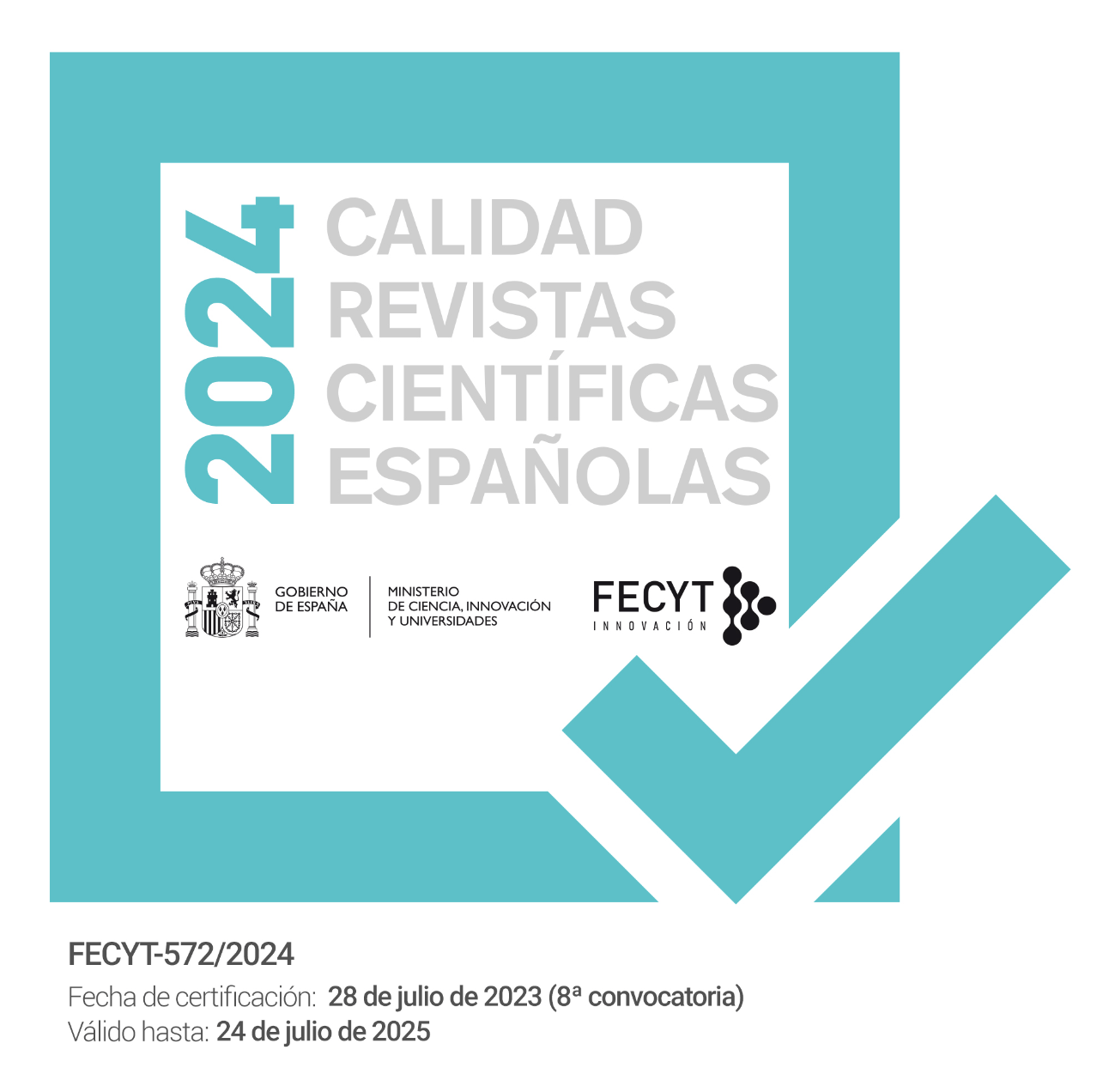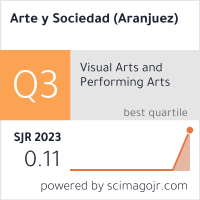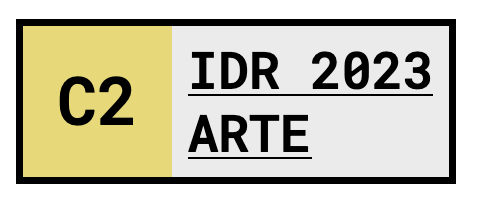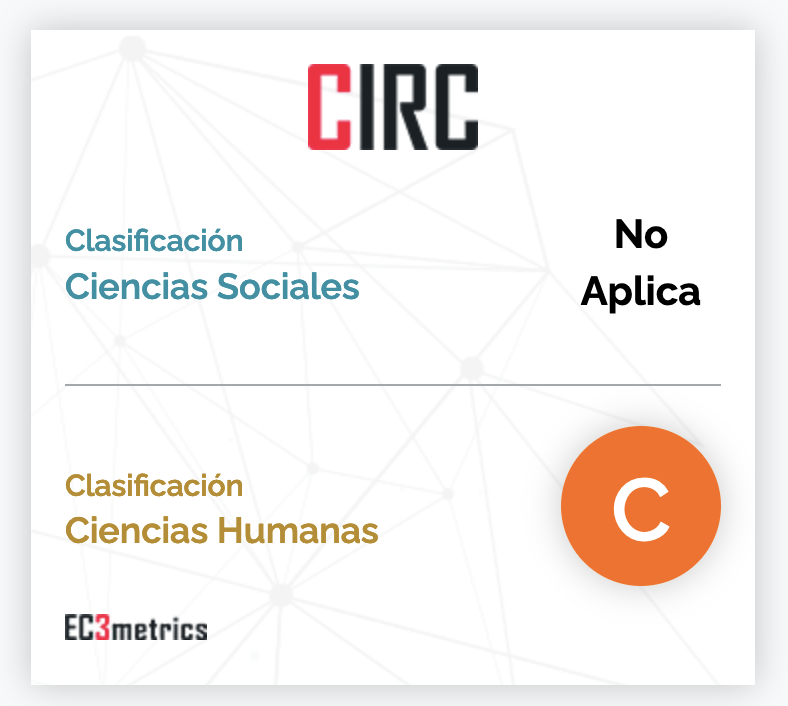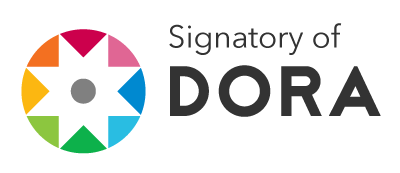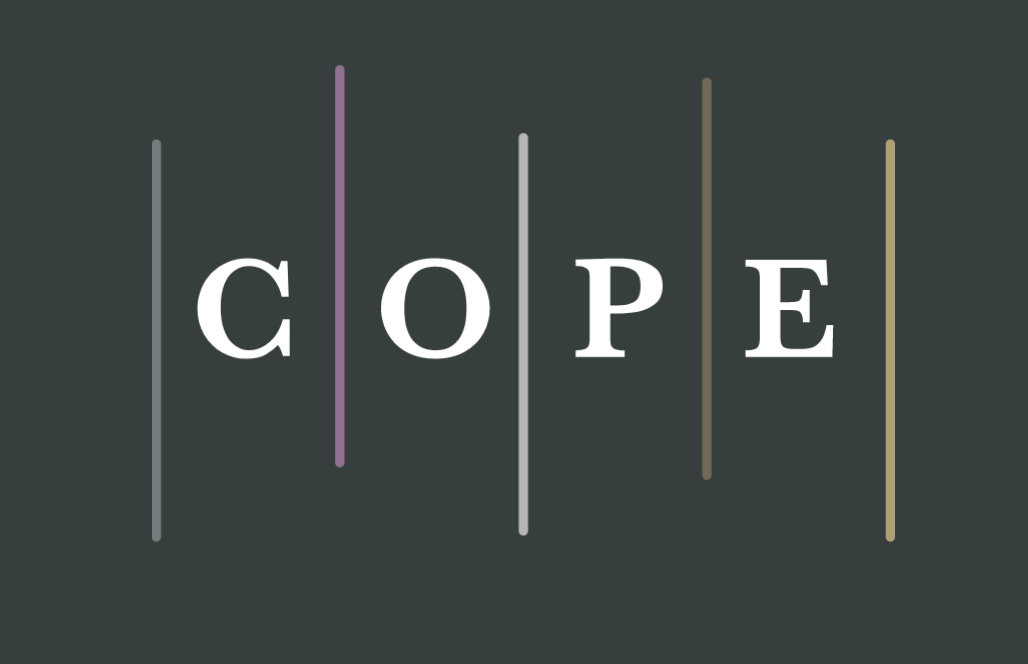CECI N´EST PAS UNE PIPE: A REFLECTION ON THE RELATIONSHIP BETWEEN WORDS AND IMAGES IN GENERATIVE ARTIFICIAL INTELLIGENCE AND ITS USE IN ARTISTIC EDUCATION.
DOI:
https://doi.org/10.33732/ASRI.6588Keywords:
Generative Artificial Intelligence, artistic practice, digital technologies, text-to -image relationshipAbstract
These pages narrate a practice carried out during several sessions in the context of the subject Digital Technologies, which I teach at the university level of the Bachelor of Arts, as well as the reflections arising in the light of its results. In the context of the final personal research project carried out in the afore mentioned subject, small practical research in Artificial Intelligence generative systems was proposed (henceforth IA) of the type of text-image (text to images), as well as an invitation to students to use the results obtained in their research to conceive and create working materials and carry out their project. They were called for a critical reflection on the relationship between the texts introduced and the images generated and by extension, between the images and the words allegedly describing them. These pages relate the procedure used, some reflections and the analysis of a case study of the work of one of the students.References
Alanes, A. M. (14 de octubre,2022). Can Ai Unlock the Unconscious? Right Click Save. https://qrcd.org/3jSH
Alija, A. (4 de enero, 2023). Dall-E: NLP Y IA Sobre Imágenes. Datos Gobierno de España. https://qrcd.org/3jSI
Anadol, R. (2023). Unsupervised. MoMa. https://qrcd.org/3jSK
Art Breede. (2019). Artbreeder [AI Art Generator]. https://qrcd.org/3jSL
Broussard, M. (2019). Artificial Unintelligence. How computers misunderstand the world. The MIT Press.
Cowan, S. (14 marzo, 2023). How to see like a machine. How to see series. MoMa. https://qrcd.org/3jSM
Crawford, K. y Paglen, T. (septiembre, 2019). Excavating AI: The Politics of Training Sets for Machine Learning. https://qrcd.org/3jSN
Dayma, B. (2021-2022). DALL·E mini by craiyon.com on Hugging Face. [AI Art Generator]. https://qrcd.org/3jSO
Deepai. (2023). Deep AI Image Generator. [AI Image Generator]. https://qrcd.org/3jSP
Derrida, J. (1995). Espectros de Marx. Editorial Trotta.
Didi Huberman, G. (2010). Atlas. ¿Cómo llevar el mundo a cuestas? Museo Reina Sofía y TF Editores, Madrid.
Fernandez Nespral, M. P. (4 de noviembre,2022). La primera portada creada con inteligencia artificial. El correo. https://qrcd.org/3jSQ
Fisher, M. (2012). ‘What Is Hauntology?’ Film Quarterly, 66, (1), 16–24. https://doi.org/10.1525/fq.2012.66.1.16
Foucault, M. (1989). Las palabras y las cosas. Una arqueología de las ciencias humanas. Siglo XXI Editores.
Foucault, M. (1981). Esto no es una pipa. Anagrama.
García, C. (noviembre, 2022). Proyecto 2. https://qrcd.org/3jST
Huyghe, P. (Octubre, 2018). UUmwelt. Serpentine Gallery. https://qrcd.org/3jSU
ImageNet. (2021). ImageNet. [Image Dataset]. https://qrcd.org/3jSV
Kremer, A. (5 de octubre, 2022). “Is Dall-e a Genius? - Notes - e-Flux.” e- Flux. https://qrcd.org/3jSW
Lewis, J.E. et al. (2018). Making Kin with the Machines. Journal of Design and Science. https://doi.org/10.21428/bfafd97b
Manovich, L. (1998). Database as a symbolic form. https://qrcd.org/3jSX
Manovich, L. y Arielli E. (2023). AI Images and Generative Media. En Artificial Aesthetics: A Critical Guide to AI, Media and Design. https://qrcd.org/3jSY
Midjourney. (2023). Midjourney . [AI Art Generator]. https://qrcd.org/3jSZ Mordvintsev, A. (2015) Deep Dream Generator [AI Art Generator]. https://qrcd.org/3jSa
Night Café Creator. (2019). Night Café. [AI Art Generator, AI Art Maker]. https://qrcd.org/3jSb
Oneyras. (2019). Keras. [Biblioteca de redes neuronales]. https://qrcd.org/3jSc
OpenAI. (2023). ChatGPT (9 de enero 2023) [Large language model]. https://qrcd.org/3jSd
OpenAI. (2023). DALL·E 2. [AI Art Generator]. https://qrcd.org/3jSe
Panofsky, E. (2003). La perspectiva como forma simbólica (11.ª ed.). Tusquets Editores.
Panopticon. (s.f.). What is Generative Adversarial Networks (GAN) Art? https://qrcd.org/3jSf
Replicate. (2023).. Pixray/text2image. [AI Art Generator]. https://qrcd.org/3jSg
Paglen T. (Septiembre, 2019). From Apple to Anomaly. Barbican. https://qrcd.org/3jSh
Ridler, A. (2021). The Shell Record. https://qrcd.org/3jSi
Staryai. (2022).Starryai. [AI Art Generator App]. https://qrcd.org/3jSj
Wombo. (2022). Dream by Wombo. [AI Art Generator App]. https://qrcd.org/3jSk.
Zylinska, J. (2020). AI Art. Machine Visions and Warped Dreams. Open Humanity Press, London. https://qrcd.org/3jSl

Downloads
Published
How to Cite
Issue
Section
License

This work is licensed under a Creative Commons Attribution 4.0 International License.
You are free to:
Share — copy and redistribute the material in any medium or format.
Adapt — remix, transform, and build on the material for any purpose, including commercial.
Attribution — You must properly acknowledge the authorship, provide a link to the license, and indicate if any changes have been made.
You may do so in any reasonable manner, but not in any way that suggests that you endorse or receive any endorsement by the licensor for your use.
No additional restrictions — You may not apply legal terms or technological measures that legally restrict you from doing what the license allows.



